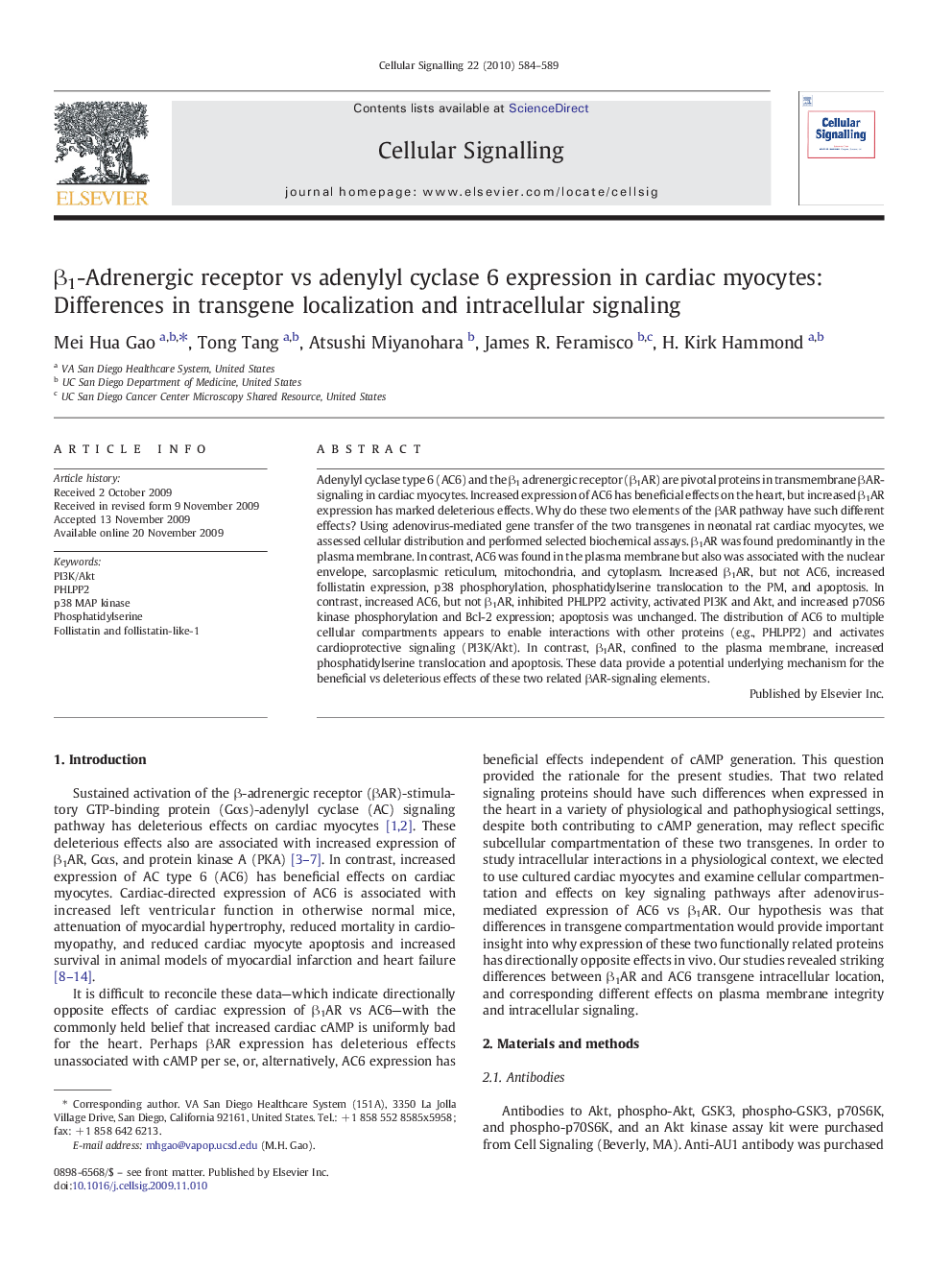| Article ID | Journal | Published Year | Pages | File Type |
|---|---|---|---|---|
| 1963755 | Cellular Signalling | 2010 | 6 Pages |
Adenylyl cyclase type 6 (AC6) and the β1 adrenergic receptor (β1AR) are pivotal proteins in transmembrane βAR-signaling in cardiac myocytes. Increased expression of AC6 has beneficial effects on the heart, but increased β1AR expression has marked deleterious effects. Why do these two elements of the βAR pathway have such different effects? Using adenovirus-mediated gene transfer of the two transgenes in neonatal rat cardiac myocytes, we assessed cellular distribution and performed selected biochemical assays. β1AR was found predominantly in the plasma membrane. In contrast, AC6 was found in the plasma membrane but also was associated with the nuclear envelope, sarcoplasmic reticulum, mitochondria, and cytoplasm. Increased β1AR, but not AC6, increased follistatin expression, p38 phosphorylation, phosphatidylserine translocation to the PM, and apoptosis. In contrast, increased AC6, but not β1AR, inhibited PHLPP2 activity, activated PI3K and Akt, and increased p70S6 kinase phosphorylation and Bcl-2 expression; apoptosis was unchanged. The distribution of AC6 to multiple cellular compartments appears to enable interactions with other proteins (e.g., PHLPP2) and activates cardioprotective signaling (PI3K/Akt). In contrast, β1AR, confined to the plasma membrane, increased phosphatidylserine translocation and apoptosis. These data provide a potential underlying mechanism for the beneficial vs deleterious effects of these two related βAR-signaling elements.
